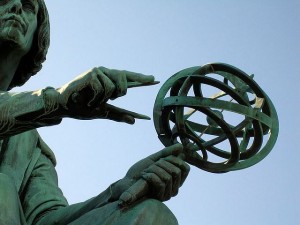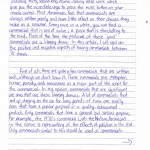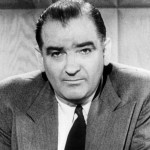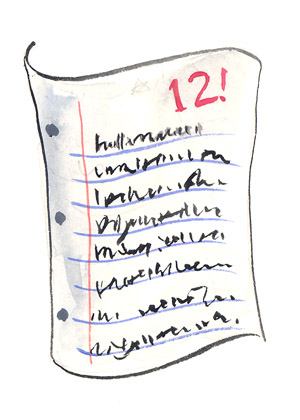 Looking for more help on the SAT Essay that you can download today? Check out 30 More SAT Essay Examples To Use, as well as my Guidebook To Writing The SAT Essay!
Looking for more help on the SAT Essay that you can download today? Check out 30 More SAT Essay Examples To Use, as well as my Guidebook To Writing The SAT Essay!
Here’s another great historical figure to use for your SAT essay evidence bank!
(In case you’re new to my SAT blog, let me catch you up to speed: I’m a perfect-scoring SAT tutor, and my advice is that you want to have your essay examples pre-planned before you get to the day of the SAT. If you pick great examples, they can be used for a wide variety of different SAT essay topics.)
Today’s focus is Nicolaus Copernicus (1473-1543) , a visionary, multi-talented Polish astronomer, scientist, and mathematician from the Renaissance. Copernicus is one of my favorite examples to use for SAT essays, because he’s so easy to remember, but very few people will think to use him.
Also, almost no one brings in examples from science – the common examples come from political and military history, literature, and personal experience. So, he’s a little off the beaten path, but still totally respectable and impressive-sounding evidence. Plus, he’s just a really cool guy and he deserves some face time :)
10 facts about Copernicus that are relevant to an SAT essay:
- He’s a prime example of a Renaissance man and jack-of-all-trades; aside from his most famous accomplishment in Astronomy, he was a physician, a diplomat, a military leader, a multi-lingual translator… and the list goes on and on.
- Astronomy was primarily a hobby to him – not his main focus in life.
- In his time, the Earth was still considered the center of the universe; this had to do with the religious belief that God created humanity as the most important living creature, so our homeworld would naturally be the center of all creation.
- Copernicus was the first person to present the theory that the Earth revolved around the Sun (the “Heliocentric,” or “sun-centered,” theory) – this is a big deal!
- This radical assertion (again, it’s called the “Heliocentric Theory” – you should know this term) was hugely influential in the history of science and Copernicus has later been honored as the initiator of a scientific or “Copernican” revolution.
- His discovery was rejected outright by the Catholic Church, one of the most powerful political and cultural forces of his age. It directly contradicted their “divine teachings”… and made them very, very nervous.
- He published his “revolutionary theory” (get it? heh) in a book called “De Revolutionibus,” which was released to the world near the end of Copernicus’s life. He died before he saw the profound effect his writing would have on the world.
- He still got it partly wrong, though, and thought that the Sun was at the center of the universe. Hey, science proceeds in small steps.
- Copernicus’s research was based on a previous scholar’s theories. This earlier scientist was named Ptolemy. Copernicus was interested in the work of this important predecessor, but saw significant holes in Ptolemy’s theories, and was willing to challenge conventional thought.
- Copernicus’s most famous follower, Galileo, would be viciously persecuted by the Church for supporting Copernicus’s theories.
Five SAT Essay Themes that Copernicus connects to:
- The value of being a jack-of-all-trades rather than a specialist (His vast range of talents helped make connections that others with a more narrow focus could not see, and astronomy was just a hobby to him)
- Not accepting conventional wisdom or societal pressure to conform (99.99% of people in his age would have thought he was crazy for his unprecedented theories)
- Valuing truth above happiness; ignorance is not bliss (Copernicus desired true knowledge more than he valued the belief that humanity was “God’s favorite creation” at the center of the universe)
- Any topic about building on the work of others (He followed in the footsteps of previous scientists while building on and expanding upon their research; also, he inspired his own generation of followers, from Galileo on down)
- Scientific progress happens in stages (although his Heliocentric theory was a huge step in the right direction, he was still wrong to believe that the Sun was the center of the universe. It would take later scientists to refine and advance his theories.)
Copernicus is a great example of someone who believed in truth and followed his own convictions, and you should plunder any of the ideas I have presented here for your own use on the SAT Essay!
Order my most popular book, Top 30 Examples to Use for the SAT Essay!
Further Reading:
What is the SAT Essay?
Secrets of SAT Essay Prompts
Top 10 Tips for the SAT Essay
Top 5 Historical Examples for the SAT Essay
SAT Essay Evidence: Joseph McCarthy
How to Write (and Ace) the SAT Essay
Additional Resources:
Top 30 Examples to Use for the SAT Essay (e-Book)
Write the Best SAT Essay of Your Life: A Guidebook (e-Book)
Conquer SAT Vocabulary (Video Course)
Get Exclusive SAT Prep Tips!
I want to send you more tips to help your SAT score, but I need your email address to stay in touch. Enter your email below so I can send you my reports on the SAT and other subscriber-only bonuses.
Before you leave today, be sure to join my SAT email list for subscriber-only bonuses like the Urgent Report on SAT Critical Reading and other exclusive content!


















Find Me on Social Media